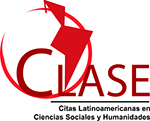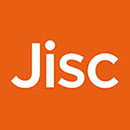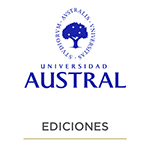The Interaction Between Intellectual Property Rights and Open Innovation Processes Applied to Modern Plant Breeding
Abstract
The knowledge requirements and the need to generate new inventions in both products and processes of modern plant breeding are highly demanding and on the frontiers of science. There is no self-sufficient technological capacity in the public or private sector capable of completely dominating such undertakings. In this general framework, the processes of open innovation, both public/private, public/public and private/private, are key to success.
Despite the opportunities generated by open innovation processes applied to modern plant breeding, an increase in the innovation rate is not detected, as measured by the average increase in crop productivity. One possible explanation for this fact is that the genetic basis on which modern plant breeding is being supported has been significantly narrowed by a lack of utilization or underutilization of genetic resources.
Intellectual property rights are part of the variables of this complex equation and their application leads to three hypotheses that were tested against four real cases of open innovation applied in modern plant breeding in Argentina.
In no case it was observed that the suppression of intellectual property rights has been considered a tool to promote innovation (hypothesis #1). On the contrary, what was observed is that the innovation was oriented towards those products or processes capable of being managed in an innovative way by some current intellectual property system, although protection is limited by the speed of technological advance. An alternative solution (hypothesis #3), is that the legal framework to promote development should be reformulated in an integral way to adapt it to the developments of modern plant breeding under open innovation processes. The decision for one or the other alternative is critical since the innovation rate resulting from the crops will depend on it.
Downloads
References
Aoki, K. (2009). “Free Seeds, Not Free Beer”: Participatory Plant Breeding, OpenSource Seeds, and Acknowledging User Innovation in Agriculture. Fordham Law Review, 77(5), 2275-2310. https://ir.lawnet.fordham.edu/flr/vol77/iss5/9.
Baregheh, A., Rowley, J. y Sambrook, S. (2009). Towards a multidisciplinary definition of innovation. Management Decision, 47, 1323-1339.
Bledow, R., Frese, M., Anderson, N., Erez, M. y Farr, J. (2009). A dialectic perspective on innovation: Conflicting demands, multiple pathways, and ambidexterity. Industrial and Organizational Psychology, 2, 305-337.
Boer, H. y During, W. E. (2001). Innovation, what innovation? A comparison between product, process and organizational innovation. International Journal of Technology Management, 22, 83-109.
Book, J. (5 de mayo de 2020). Matt Ridley on Innovation. American Institute for Economic Research. https://www.aier.org/article/matt-ridley-on-innovation/.
Botana Agra, M. (2017a). Efectos de la Patente. En Fernández-Novoa, C., Otero Latres, J. M. y Botana Agra, M. (Eds), Manual de la Propiedad Industrial (3a ed., pp. 163-178). Madrid/Barcelona/Buenos Aires: Marcial Pons.
Botana Agra, M. (2017b). Protección jurídica de las obtenciones (variedades) vegetales. En Fernández-Novoa, C., Otero Latres, J. M. y Botana Agra, M. (Eds), Manual de la Propiedad Industrial (3a ed., pp. 319-344). Madrid/Barcelona/Buenos Aires: Marcial Pons.
Brem, A., Nylund, P. y Hitchen, E. (2017) Open innovation and intellectual property rights. Manag Decis, 55(6), 1285-1306.
Byrum, J. (febrero de 2017). Open Innovation Drives Progress in Plant Breeding. Seed World. https://seedworld.com/open-innovation-drives-progress-plant-breeding/.
Chesbrough, H. W. (2003). Open Innovation: The new imperative for creating and profiting from technology. Boston: Harvard Business School Press.
Chesbrough, H. W. (2006). Open Business Models: How to Thrive in the New Innovation Landscape. Boston: Harvard Business School Press.
Chesbrough, H. W. (enero de 2011). Open Services Innovation: Rethinking Your Business to Grow and Compete in a New Era. Nueva York: John Wiley & Sons.
Chesbrough, H. W. (2019). Open Innovation Results: going beyond the hype and getting down to business. Londres: Oxford University Press.
Chesbrough, H. W. y Bogers, M. (2014). Explicating open innovation: clarifying an emerging paradigm for understanding innovation. En Chesbrough, H. W., Vanhaverbeke, W. y West, J. (Eds.), New frontiers in open innovation (pp. 1-37). Oxford: Oxford University Press.
Chesbrough, H. W, Vanhaverbeke, W y West, J. (Eds.) (2006). Open Innovation: Researching a New Paradigm. Londres: Oxford University Press.
Correa, C. M. (2014). Patent protection for plants: Legal options for developing countries (Research Paper 55). Ginebra: South Centre.
Correa, C. M. (2015). La protección de las obtenciones vegetales para los países en desarrollo. Una herramienta para el diseño de un sistema sui generis de protección de las obtenciones vegetales: una alternativa al Acta de 1991 del Convenio de la UPOV. APBREBES. http://www.apbrebes.org/.
Crossan, M. M. y Apaydin, M. (2010). A multi-dimensional framework of organizational innovation: A systematic review of the literature. Journal of Management Studies, 47, 1154-1191.
Dederer, H. G. (4 de junio de 2020). Patentability of Genome-Edited Plants: A Convoluted Debate. IIC - International Review of Intellectual Property and Competition Law, (51), 681-684. https://doi.org/10.1007/s40319-020-00952-9.
EuropaBio (2018). Biotechnology. How intellectual property rights promote innovation and create economic and societal value. https://www.europabio.org /sites/default/files/IP%20brochure-%20final.pdf.
Fernando Magarzo, M. R. y Lema Devesa, C. (2002). Las patentes sobre biotecnología en el Derecho español. Actas de derecho industrial y derecho de autor, (23), pp.147-168.
Hall, B. H. (2010). Open Innovation and Intellectual Property Rights. The Two-edged Sword. Japan Spotlight: Economy, Culture y History, (jan/feb), 18-19.
Henry, J. (2019). Innovations in plant genetics adapting agriculture to climate change. Current Opinion in Plant Biology, (13), 1-6.
Instituto Interamericano de Cooperación para la Agricultura. (2019). Innovación y Tecnología. Instituto Interamericano de Cooperación para la Agricultura. https://repositorio.iica.int/bitstream/handle/11324/7974/BVE19040251e.pdf; jsessionid=720035D979EFDB28CA06C6112587FF20?sequence=1yutm_source=email_marketingyutm_admin=131431yutm_medium=emailyutm_campaign=hs_Arg_Encuentro_Virtual_EL_IMPACTO_CIENTFICO_TECNOLGICO_EN_EL_DESARROLLO_DEL_SECTOR_AGROPECUARIO_OE.
Kalange, C. M. (2020). Role of Intellectual Property in Innovation and New Product Development, Consultor, División de Pymes de la OMPI. Sitio web de la Organización Mundial de la Propiedad Intelectual. https://www.wipo.int/export/sites/www/sme/en/documents/pdf/ip_innovation_development.pdf.
Lema Devesa, C. y Fernando Magarzo, M.R. (2002). Las patentes sobre biotecnología en el derecho español. Actas de Derecho Industrial y de Derechos de Autor, XXIII, pp. 147-168.
Lizaso, F y Schötz, G. (Dirs.). (2017). Plataformas abiertas para tecnologías estratégicas: relevamiento, análisis de pre-factibilidad y propuesta de diseño de modelo conceptual: informe final (1a ed.). Ciudad Autónoma de Buenos Aires: Ministerio de Ciencia, Tecnología e Innovación Productiva, Presidencia de la Nación. https://www.argentina.gob.ar/sites/default/files/plataformas-abiertas-para-tecnologias-estrategicas_0.pdf.
Müller, M. L. y Campos, H. (2020). Open Innovation and Value Creation in Crop Genetics. En Campos, H. (Ed.), The Innovation Revolution in Agriculture. Springer, Cham. https://doi.org/10.1007/978-3-030-50991-0_3.
O’Sullivan, D. y Dooley, L. (2009). Applying innovation. Thousand Oakes: SAGE Publications.
Oguamanam, C. (2013). Open innovation in plant genetic resources for food and agriculture. Chicago-Kent Journal of Intellectual Property, 13(1), 11-50. https://papers.ssrn.com/sol3/papers.cfm?abstract_id=2310635.
Organization for Economic Co-operation and Development. (2005). Oslo Manual 2005: Guidelines for collecting and interpreting innovation data (3a ed.). París: Organization for Economic Co-operation and Development.
Organization for Economic Co-operation and Development. (2018). Oslo Manual 2018: Guidelines for Collecting, Reporting and Using Data on Innovation (4a ed.). París: Organization for Economic Co-operation and Development. https://doi.org/10.1787/9789264304604-en.
Organization for Economic Co-operation and Development/Food and Agriculture Organization. (2019). OECD-FAO Agricultural Outlook 2019-2028. París: OECD Publishing/Roma: Food and Agriculture Organization of the United Nations. https://doi.org/10.1787/agr_outlook-2019-en.
Pénin, J. y Neicu, D. (2018). Patents and open innovation: bad fences do not make good neighbors. Journal of Innovation Economics & Management, (25), pp. 57-85.
Rapela, M. A. (2000). Derechos de propiedad intelectual en vegetales superiores. Buenos Aires: Editorial Ciudad Argentina.
Rapela, M. A. (2010). Farmer’s exception, farmer’s rights and other related issues. Seed News, XIV(1), pp. 28-29.
Rapela, M. A. (2016). Ley 20.247 de Semillas y Creaciones Fitogenéticas: las razones para su actualización y los proyectos bajo análisis en Argentina. Revista Interdisciplinaria de Estudios Agrarios, (45), 69-98.
Rapela, M. A. (2019a). Post Malthusian dilemmas in Agriculture 4.0. En Rapela, M. A., Fostering innovation for Agriculture 4.0. A comprehensive Plant Germplasm System (pp. 1-16). Suiza: Springer Nature.
Rapela, M. A. (2019b). The regulatory tangle. En Rapela, M. A., Fostering innovation for Agriculture 4.0. A comprehensive Plant Germplasm System (pp. 17-52). Suiza: Springer Nature.
Rapela, M. A. (2020). Mejoramiento vegetal moderno, inteligencia artificial y derechos de propiedad intelectual. Revista Jurídica Austral, 1(2). En prensa.
Rapela, M. A. (Dir.) y Schötz, G. J. (Coord.). (2006). Innovación y propiedad intelectual en mejoramiento vegetal y biotecnología agrícola. Buenos Aires: Heliasta.
Ridley, M. (2010). The Rational Optimist. Estados Unidos: Harper.
Ridley, M. (2020). How Innovations Works and Why it flourishes in freedom. Estados Unidos: Harper.
Rogers, E. M. (2003). Diffusion of innovations (5a ed.). Nueva York: Free Press.
Ruane, J. (Ed.). (2019). Proceedings of the International Symposium on Agricultural Innovation for Family Farmers. Unlocking the potential of agricultural innovation to achieve the Sustainable Development Goals. Roma: Food and Agriculture Organization of the United Nations. http://www.fao.org/3/ca4781en/CA4781EN.pdf.
Sánchez Herrero, A. (2007). El contenido patrimonial del derecho de obtentor (Vol. 44). Córdoba: Ediciones de la Academia Nacional de Derecho y Ciencias Sociales de Córdoba.
Schilling, M. A. (2013). Strategic management of technological innovation (4a ed.). Nueva York: McGraw-Hill/Irwin.
Tidd, J. y Bessant, J. (2009). Managing innovation: Integrating technological, market and organizational change (4a Ed). Hoboken, Nueva Jersey: John Wiley & Sons.
Williams, E. (2010). Intellectual Property Rights and Innovation: evidence from the human genome. Journal of Political Economy, 121(1), 1-27.
Virginia Tech. (16 de octubre de 2019). Accelerating global agricultural productivity growth is critical. ScienceDaily. www.sciencedaily.com/releases/2019/10/191016074750.htm.
Copyright (c) 2020 Miguel A. Rapela

This work is licensed under a Creative Commons Attribution-NonCommercial-NoDerivatives 4.0 International License.
This license allows the copy, distribution, exhibition and representation of the work provided authorship is acknowledged and the work is properly quoted. Commercial use of the original work or the generation of derived works are not allowed.
The authors hereby guarantee the right to the first publication of the work to the Revista Iberoamericana de la Propiedad Intelectual.












































